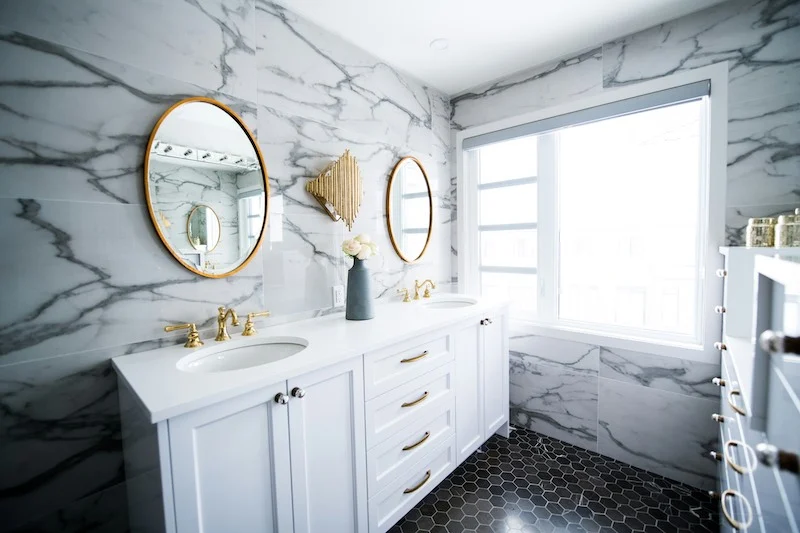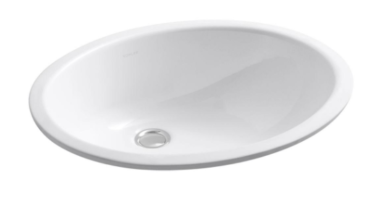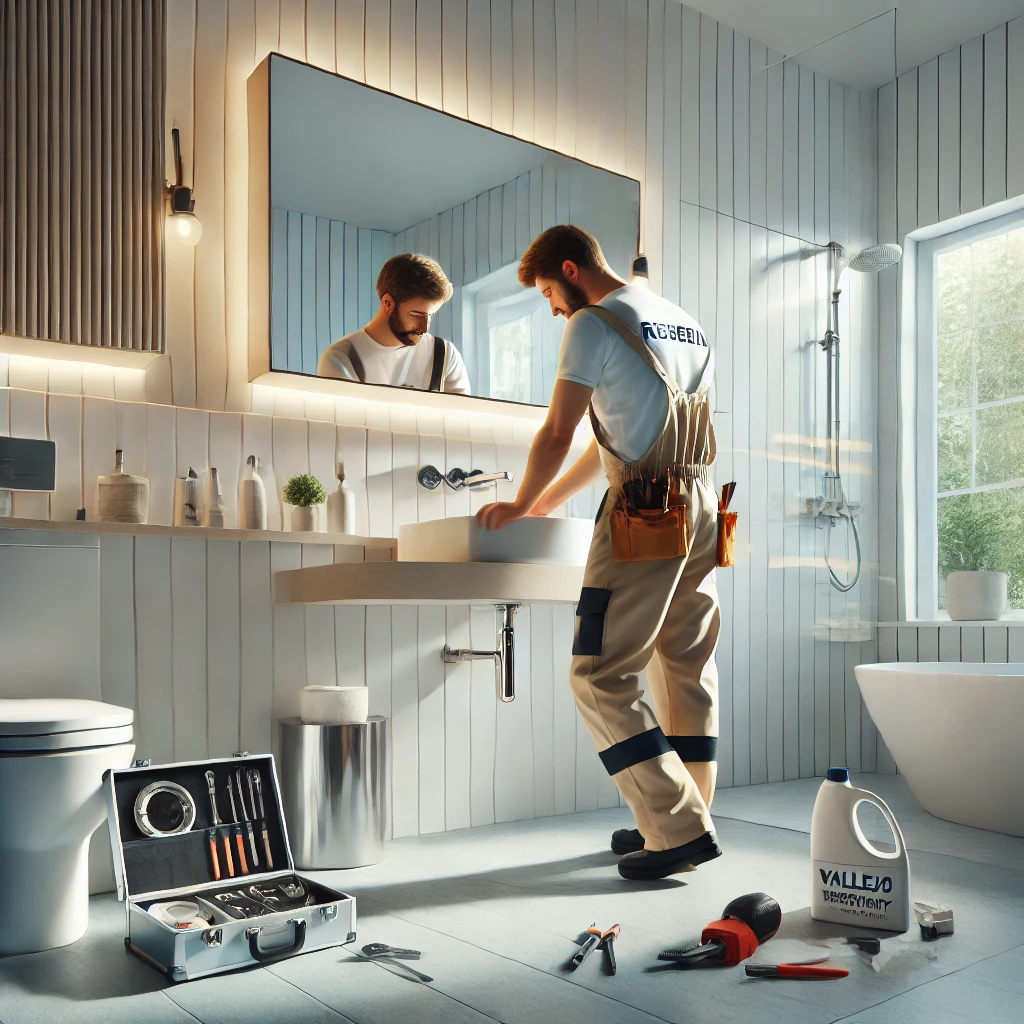The Ultimate Guide to Bathroom Vanity: Elevate Your Space
A bathroom vanity is more than just a functional piece; it’s the centerpiece of your bathroom that seamlessly combines practicality with aesthetics. In this comprehensive guide, we’ll delve into the world of bathroom vanities, exploring styles, materials, installation tips, and what to consider before making a purchase. Whether you are renovating or upgrading, this article will provide you with everything you need to know about selecting the perfect bathroom vanity for your home.
What Is a Bathroom Vanity?
A bathroom vanity typically consists of a sink, countertop, and storage, providing a balance between utility and style. It serves as a focal point for daily grooming activities and often sets the tone for the overall design of the bathroom. Modern vanities come in a variety of shapes, sizes, and finishes to fit different bathroom layouts and preferences.
Why Is a Bathroom Vanity Important?
A well-chosen bathroom vanity enhances the bathroom’s functionality and adds visual appeal. It provides essential storage space for toiletries, cleaning supplies, and grooming items, ensuring that the bathroom remains clutter-free. The vanity also contributes to the room’s design language, tying in elements like mirrors, lighting, and wall finishes.
Popular Bathroom Vanity Styles
- Traditional Bathroom Vanities
Characterized by intricate details, ornate moldings, and antique finishes, traditional bathroom vanities are perfect for classic and vintage-themed bathrooms. They often feature rich wood tones, marble countertops, and brass or gold fixtures. - Modern Bathroom Vanities
Sleek, minimalist, and functional, modern vanities are designed with clean lines and often feature materials like glass, metal, and high-gloss surfaces. These vanities prioritize simplicity and space efficiency, making them ideal for smaller bathrooms. - Transitional Bathroom Vanities
If you’re torn between modern and traditional, a transitional bathroom vanity offers the perfect middle ground. These vanities combine the clean lines of modern design with the warmth and detail of traditional styles. - Rustic and Farmhouse Vanities
These vanities often use reclaimed wood, distressed finishes, and natural textures to create a warm, cozy atmosphere. Pairing a rustic vanity with a stone countertop and wrought-iron hardware can add a touch of farmhouse charm.
Types of Bathroom Vanities
- Single-Sink Vanity: Ideal for small bathrooms and powder rooms, offering ample storage without taking up much space.
- Double-Sink Vanity: Perfect for shared bathrooms, allowing two people to use the sink simultaneously.
- Wall-Mounted Vanity (Floating): Creates an illusion of space by elevating the vanity off the floor, perfect for contemporary bathrooms.
- Freestanding Vanity: Offers flexibility and ease of installation, commonly found in both modern and traditional designs.
- Corner Vanity: A space-saving solution designed for compact bathrooms.
Materials Used in Bathroom Vanities
Selecting the right material for your vanity is essential for its durability and appearance. Here are some popular options:
- Solid Wood: Known for its durability and classic appeal, solid wood vanities are often more expensive but worth the investment.
- MDF (Medium-Density Fiberboard): A budget-friendly option that can mimic the appearance of real wood when painted or laminated.
- Plywood: Durable and moisture-resistant, making it a great middle-ground option.
- Particleboard: An economical choice that can serve well if properly sealed against moisture.
- Glass and Metal: Modern vanities often incorporate glass or metal for a sleek, futuristic look.
Choosing the Right Countertop for Your Vanity
The countertop is a significant aspect of your bathroom vanity, contributing to both the visual appeal and functionality. Here are common countertop materials:
- Granite: Durable and attractive, available in a variety of natural patterns and colors.
- Quartz: Engineered for strength, low maintenance, and a seamless appearance.
- Marble: Luxurious but prone to staining; requires regular sealing.
- Laminate: Budget-friendly and available in various finishes, but less durable.
- Solid Surface: Combines acrylic and polyester materials for a non-porous, easy-to-maintain surface.
Top Features to Look for in a Bathroom Vanity
When choosing a vanity, it’s essential to consider features that enhance functionality and align with your needs:
- Soft-Close Drawers: Prevents slamming, adding longevity to the drawer mechanism.
- Built-in Electrical Outlets: Convenient for using grooming appliances.
- Integrated Lighting: Adds ambiance and improves visibility.
- Customizable Storage Solutions: Dividers and pull-out shelves to organize toiletries.
Choosing the Right Size for Your Bathroom Vanity
To pick the ideal size, consider the following:
- Measure Your Space: Ensure there’s enough room for the vanity without obstructing foot traffic.
- Height: Standard heights range from 30 to 36 inches. Taller vanities may be more comfortable for adults.
- Depth: The average depth is around 20 to 21 inches, but this can vary based on your needs.
Installation Tips for Your Bathroom Vanity
- Plan for Plumbing: Ensure the vanity accommodates existing plumbing or make necessary adjustments.
- Anchor Securely: Proper anchoring to the wall is essential for stability.
- Check for Leveling: A leveled vanity prevents water pooling and improves durability.
Pros and Cons of Various Bathroom Vanities
Single-Sink Vanity:
- Pros: Space-saving, affordable, perfect for smaller bathrooms.
- Cons: Limited counter space.
Double-Sink Vanity:
- Pros: Great for shared spaces, ample counter space.
- Cons: Requires more space and higher installation costs.
Wall-Mounted Vanity:
- Pros: Modern aesthetic, saves floor space.
- Cons: Less storage capacity.
Maintaining Your Bathroom Vanity
Regular cleaning and maintenance ensure your vanity stays in top condition:
- Wipe Surfaces: Use non-abrasive cleaners to prevent scratches.
- Avoid Standing Water: Prolonged exposure to moisture can warp materials.
- Seal Stone Countertops: Periodically sealing prevents stains and water damage.
How to Pair Your Bathroom Vanity with Other Decor Elements
Creating a cohesive look involves more than just choosing a vanity. Consider:
- Mirrors: A large mirror or a decorative framed mirror can complement your vanity’s style.
- Lighting Fixtures: Vanity lights should provide adequate brightness without casting shadows.
- Faucets and Hardware: Choose finishes that match or contrast with the vanity, such as brushed nickel or matte black.
- Wall Colors and Tiles: Neutral colors highlight the vanity, while bold colors or patterned tiles make a statement.
Budgeting for Your Bathroom Vanity
Vanities range from budget-friendly options under $200 to luxurious custom builds over $2000. Consider these factors:
- Material and Finish: Premium woods and stone countertops will increase costs.
- Customization: Custom-built vanities offer flexibility but at a higher price.
- Installation: Professional installation adds to the overall cost, especially for complex plumbing setups.
Eco-Friendly Bathroom Vanities
Sustainability is an essential consideration today:
- Recycled Materials: Vanities made from reclaimed wood or recycled glass help reduce environmental impact.
- Water-Saving Fixtures: Pair your vanity with eco-friendly faucets that limit water flow.
- VOC-Free Finishes: Ensure the paint or finish on the vanity is low in volatile organic compounds for healthier indoor air.
Trends in Bathroom Vanities for 2024
The bathroom design landscape evolves every year. Current trends include:
- Floating Vanities with LED Lighting: For a modern, spa-like atmosphere.
- Matte Black and Natural Wood Combos: Create a striking contrast.
- Minimalist Vanities: Space-efficient designs with integrated storage.
FAQs
What is the best material for a bathroom vanity?
Solid wood is the most durable option, while MDF and plywood offer good moisture resistance at a lower cost.
Can I install a bathroom vanity myself?
Yes, but ensure you are confident in handling plumbing adjustments. Professional installation is recommended for complex setups.
How do I maintain my bathroom vanity?
Clean it regularly with non-abrasive products and avoid leaving water on the surface to prevent warping.
What’s the standard height for a bathroom vanity?
Standard heights range from 30 to 36 inches. Taller vanities are often more comfortable for adult use.
Is a double-sink vanity worth the extra space?
Yes, if you share the bathroom with another person, as it offers dual functionality and ample storage.
How can I make my small bathroom look larger with a vanity?
Choose a wall-mounted or light-colored vanity to create an illusion of space.





